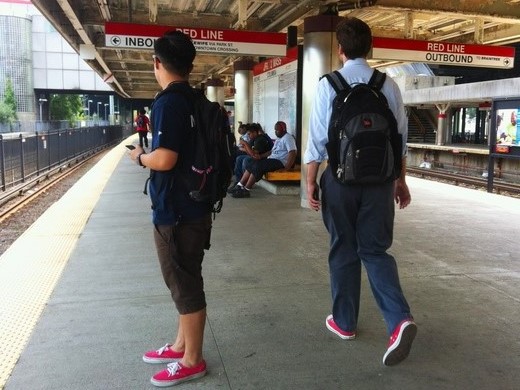Relatively speaking, UMass Boston commuter students have it pretty good — the campus is directly accessible by highway and is interconnected with Boston’s sprawling MBTA system. Dedicated shuttles get you where you need to go. Commuting students can travel almost anywhere in Eastern Massachusetts — but you already knew all that.
Taking a closer look, commuter life at UMass Boston is more of a challenge and isn’t getting any easier. In 2006, before most students can remember, the massive 1,660-space lot beneath our campus was closed for safety reasons. Parking was diverted to the surface lots we’ve become familiar with — but one by one, these are being reclaimed for precious building space. The newest Bayside lot provides needed relief, but can hardly be considered on-campus parking. Also, the daily price for parking, currently $6, is rumored to be heading for an increase soon.
Between painfully high gas prices, notorious Boston traffic, and dwindling parking space, it’s no surprise that almost 40 percent of commuters use public transportation to get here. The core MBTA lines reach all over the Boston area and beyond and the Mass. Bay Commuter Rail (MBCR) serves suburban destinations. But riders have been faced with a string of recent fare hikes, pushing some commuter rail fares as high as $10 one way. Incredible.
Many students are also aware of the need to adapt to environmental change, especially now more than ever. Change is natural, but the human acceleration of this change — the emission of huge quantities of greenhouse gases into the atmosphere — is not. Transportation is the second-largest source of greenhouse gas emissions in our country today, bettered only by electricity production.
People laugh at “global warming,” while winter has been dragging into March and April in recent years. The reality is that climate change itself will lead to shifted seasons, flooded roads, and severe storms like Hurricanes Katrina, Sandy, and the recent blizzard Nemo.
It is here that I saw an opportunity to create a way for suburban riders to compare the costs of commuting while taking into account the usually-ignored carbon emission factor. I gathered, collected, and produced the data needed to create a complete cost and carbon calculator for most suburban commutes to UMass Boston.
The calculator requires only a few basic inputs — How far will you be driving to school? What’s your nearest rail station? How many days per week will you commute? The return uses information from AAA, EPA, MBTA, UMass Boston, New Jersey Department of Transportation, and more to produce a side-by-side comparison of your costs and carbon output, and a projected per-semester and four-year cost. The intention is to help far-away suburban staff, faculty members and students grasp the long-term effects of their choices, and (more importantly to some) see the possible savings.
After running the calculation for a number of different towns around the state, trends became visible. To make it simple, driving to UMass Boston is more costly in the long-run than taking the train. However, much of the cost of driving can be attributed to the cost of buying, maintaining, and insuring the car. Other costs include gas and parking, both of which are on the rise. If you can avoid owning a car from the start you’ll notice the savings. For suburban commuters, however, this can be challenging.
Commuting by train almost universally slashes carbon emissions by nearly 70 percent, a reminder of why efficient rail and public transit are so important. Whether you own a car or not, if you choose to take the train over driving, you’re producing less than a third of the carbon output that driving would have caused. Over four years, hundreds of pounds of carbon can be saved by planning to take the train.
Large changes start with small decisions, and how you get to UMass Boston during your time here is one you can’t avoid. For many, commuting by any means is still cheaper or more practical than living in the city, and with proper planning, you can maximize your savings and minimize your harm to the global environment.
The calculator remains inaccessible from the web, but the framework has been laid for future adaptations into a web-based feature or an app. Want to find out what your commute cost (and carbon emissions level) looks like? Contact Rebecca Clemons at [email protected]





















































